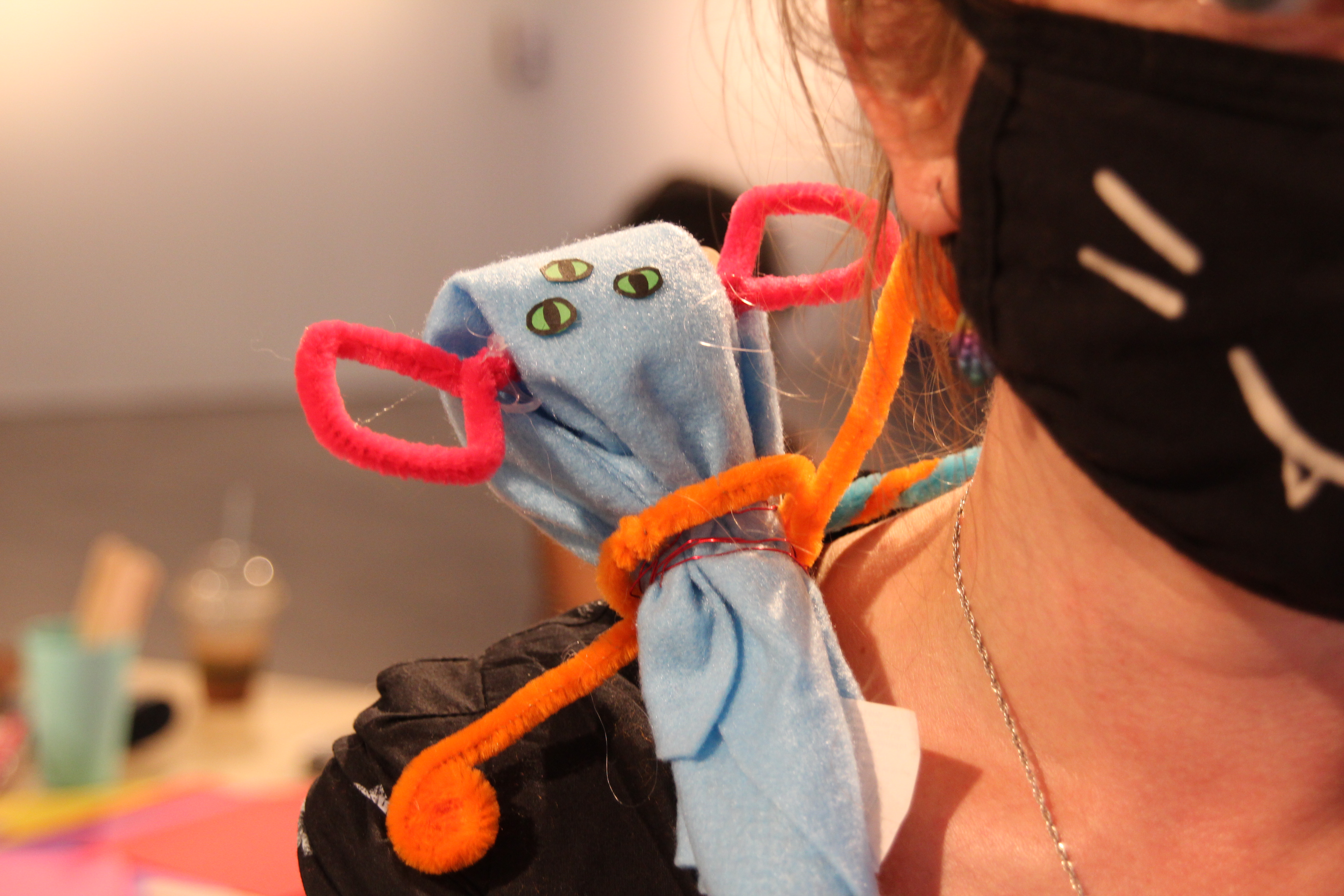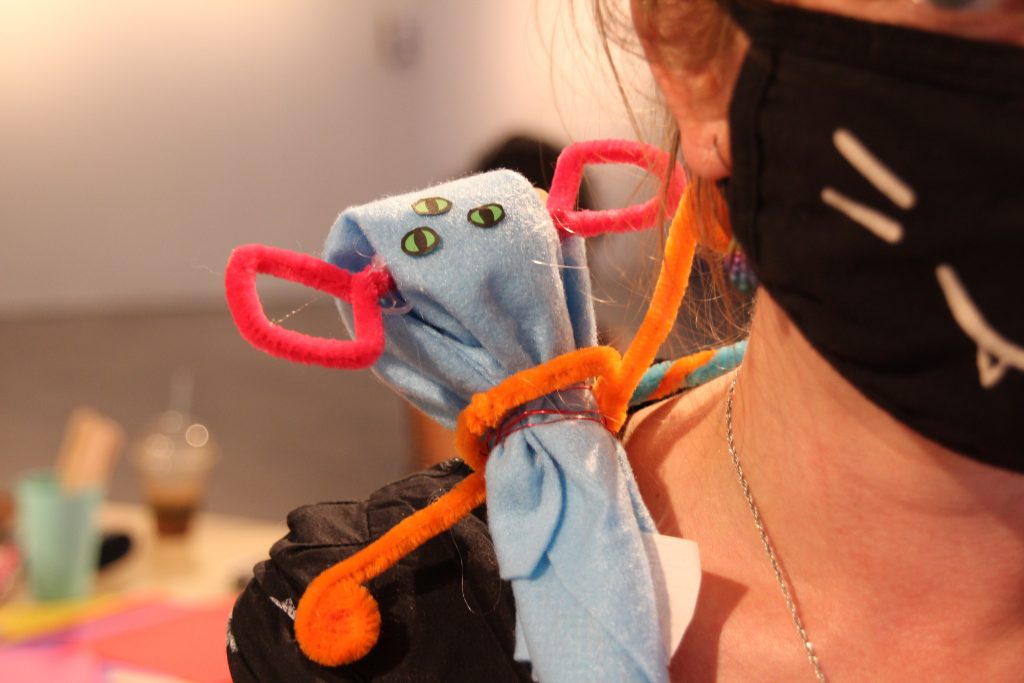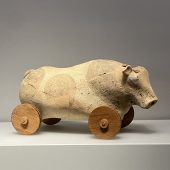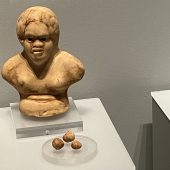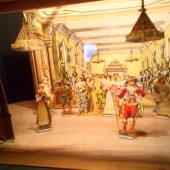Earlier this year we ran a Web Science Institute-funded pilot project called ‘Chatbots in the Gallery.’ The project team, Dr Sarah Hayden, Samantha Schäfer, Lesia Tkacz and myself explored the use of conversational agents or chatbot applications in an art gallery setting. Building on the SIAH-funded ‘Towards a Creative AI Lab’ project (Sam, Lesia and myself), we researched the kinds of technologies and systems that might be used in making accessible and flexible devices and applications and ran an ‘AI Jam’ at Winchester School of Art Gallery in July:
I’ll post more on the AI Jam activities and creations, and the project’s other findings, soon. Below is an extract from the bid:
“The use of audio-visual media devices to orient, guide, inform and entertain museum and gallery goers is well-established, from audio guides to interactive screens for information or playful engagement in museums and galleries, and currently a great deal of investment in XR approaches (Virtual Reality, Augmented Reality, Mixed Reality) is evident. Meanwhile, the past year has accelerated development of a new awareness among cultural institutions that their interpretive provision needs to take greater account of audiences’ diverse sensory and somatic experiences, and that meaningful efforts to develop new audiences require innovative as well as inclusive approaches to exhibition interpretation and access. In prototyping a portable or wearable system that will engage and guide the visitor through voice-based interaction the project will, we hope, offer a playful and accessible mode of engagement with art and museum exhibitions. Taking AI and the Internet of Things rather than interactive screens or XR as its starting point the project will be technically innovative and playful, whilst at the same offering less comfortable or confident gallery visitors a degree of intimacy or privacy in conversing this way, the potential to ask questions using a format familiar from their everyday text-chat interactions.
The project will pursue two key innovations: first to determine a low-cost and accessible assemblage of hardware and software for flexible and iterative applications; and second to experiment with the design or ‘writing’ of the conversational agent as a character or set of characters, determining modes of conversation (informational, questioning, enigmatic, etc.), opening up opportunities for playful institutional critique, dissolving the authority of the single curatorial interpretation, and prompting discussions both about the specific conversational forms occasioned by particular art practices and those most useful for particular gallery-going groups”.
